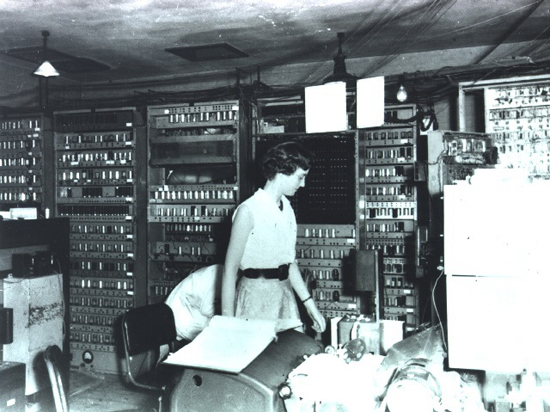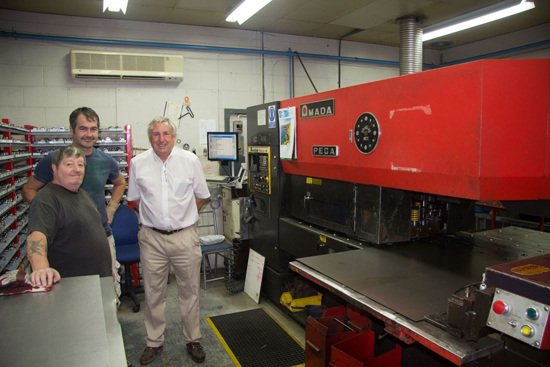Maurice Wilkes and William Renwick, chief creators of EDSAC, circa 1948. Image via Computer Laboratory, University of Cambridge
A project to recreate a working replica of the original early British computer, the Electronic Delay Storage Automatic Calculator (EDSAC), is set to start this week in front of visitors to the National Museum of Computing in the UK.
The original EDSAC, which was built at Cambridge University, first started running in 1949.
This week work will begin on building the first replica components of EDSAC, including replica chassis. The project to build a working replica of EDSAC was first announced a year ago, with engineers hoping to finish recreating the machine by 2015.
Original EDSAC artefacts are now also on display to visitors to the National Museum of Computing.
EDSAC was based on the ideas of John von Neumann and others who in 1945 suggested that the future of computing lay in computers that could store sets of programmes, as well as data.

EDSAC in operation. Image via Computer Laboratory, University of Cambridge
The late Prof Maurice Wilkes, often regarded as the father of British computing, led the team that built the EDSAC for the mathematical laboratory at Cambridge University.
The machine was more than 2 metres high and occupied a ground area of 4 metres by 5 metres. Its 3,000-plus thermionic valves were arranged on 12 racks containing more than 140 chassis.
Andrew Herbert, the project manager on the EDSAC rebuild, said the machine marked a hugely important early milestone in computing.
“Until EDSAC, general purpose computers had been purely experimental systems locked away in research laboratories,” he said.
Herbert added that EDSAC spawned the invention of LEO, the first computer used in business.
“The impact of EDSAC has been profound, so we aim to celebrate the achievements of its creators and to inspire future generations of engineers and computer scientists,” he said.
The machine started operating in May 1949. It was continuously expanded and ran for a further nine years. Only three of EDSAC’s 140 chassis have survived to the present day.
One of these chassis has been used as the model for the production of the first 20 replica chassis using modern processes at Teversham Engineering in Cambridge.

Manufacturing the chassis with modern technology at Teversham Engineering, Cambridge
“Over the past year we have researched EDSAC’s design and original construction, so this week marks the exciting transition from research to production,” said Herbert.
Volunteers at the National Museum of Computing are carrying out the project along with the Computer Conservation Society. Tech entrepreneur and investor Hermann Hauser is providing funding for the rebuild, while Google has also donated cash to fund the project.